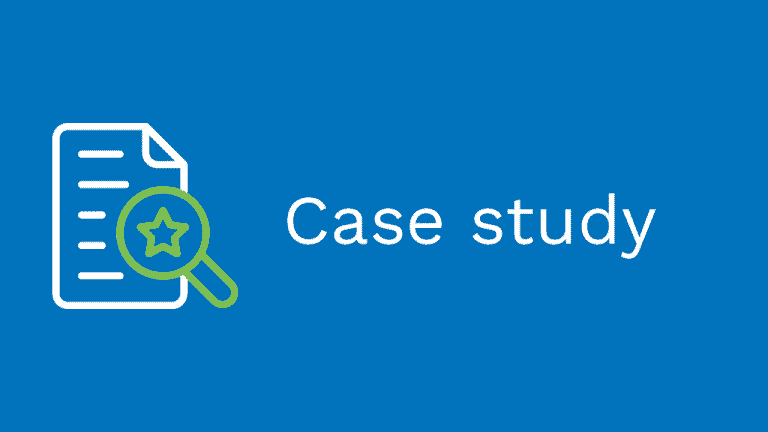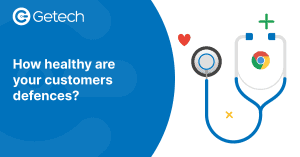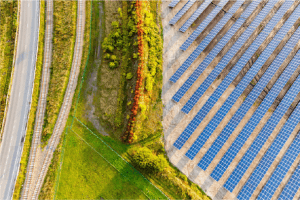
Peace of mind for IT admins with Zero Touch Enrollment
Find out how we’re helping schools and businesses save time deploying managed Chromebooks so they can focus on what really matters.


Find out how we’re helping schools and businesses save time deploying managed Chromebooks so they can focus on what really matters.

Are you making the most of your Google Admin console? Our Admin Console Health Check can help ensure your settings and policies are optimised for security.

Organisations are spending big to improve their security with products that claim to fend off hacks and eliminate vulnerability, spending up to 13% of their overall IT budget according to a study by Gartner, and that was five years ago. Since then, the number of breaches has continued to rise, with over two-thirds of business leaders experiencing an increase in cyberattacks in 2019. Phishing scams, DDoS attacks, and malware cost organisations billions due to data breaches and ransomware. Even the NHS isn’t immune, with the WannaCry attack costing our health service some £92 million in 2017. However, it’s not all down to opportunists getting past expensive third-party antivirus software – 95% of breaches are caused by human error. With working from home continuing to be a target for cyber-criminals, it’s now more vital than ever for businesses to invest in the technology that will keep their users, their data and their revenues protected from online threats. What are we used to? A bloated and flawed operating system running software that requires extemporary and disruptive manual updates Gigabytes of locally stored intellectual property, personally identifiable information, and user credentials Third-party antivirus definitions with separate billing and renewal cycles Devices built using a mish-mash of components are prone to conflicts and issues that need direct user intervention to keep patched over time Poorly enforced boundaries between system processes can allow hackers total access to a device through a single compromised module What does this mean? Working from home creates new problems as tools and processes designed for corporate networks become less and less effective Ops teams that struggle with enforcing consistent device images and patching firmware and apps across distributed endpoints IT admins are forced to focus on monitoring devices to identify vulnerabilities and detect compromises Businesses have an opportunity to make game-changing improvements in endpoint security and administration by capitalising on the inherent advantages of cloud-based architectures. Admins are able to manage their entire IT estate remotely from a central cloud-based console, and processes can be streamlined or wholly automated, allowing them to focus on proactive improvements rather than reactive maintenance. Chromebooks and other Chrome OS devices have been designed from the ground up to solve many of these issues for organisations of all sizes. Below are just some of the ways Google makes it easy for administrators to keep their endpoints secure and their users safe when working online from anywhere. 1. Automatic updates Keeping your firmware and software up-to-date can be an arduous task, which is exacerbated further when dealing with a distributed workforce. Even when vulnerabilities are announced or new attack techniques are discovered, your users often dismiss your best efforts to keep them safe and their data secure. Chrome devices benefit from automatic updates, which can be controlled remotely from the Google Admin console. These occur every six weeks – far more often than other major operating systems. Updates happen in the background and automatically take effect the next time the device is booted, minimising disruption and allowing your staff to keep working as normal. 2. Verified boot When a Chromebook boots up, the read-only OS checks itself against a known safe version using a signature and a signed hash to verify that the version being loaded exactly matches the image approved by Google. The now-verified firmware then uses the same process to check all the blocks of code in the operating system and Chrome browser to ensure there are no discrepancies. If any evidence of tampering or malware is found, the process stops and the device reboots using a backup version of Chrome OS. As it’s impossible to boot corrupted firmware on a Chromebook, Ops staff can avoid the tedious work required to remedy compromised software and files on the machine. 3. Sandboxing Several classes of cyber attacks use compromised websites and applications to take control of software components on the device, so Chromebooks utilise process sandboxing to enforce boundaries between applications in use. As apps on a Chrome device cannot communicate with each other (except under strict conditions), should your user unwittingly visit an infected website or side-load some unauthorised software, there’s no chance of it tainting anything else on the device. Simply close the app or page and the threat is swiftly neutralised and removed from the device. 4. Google Admin console When coupled with a Chrome Enterprise or Education Upgrade, businesses can unlock the Google Admin console and over 300 policies and settings they can tailor to the needs of their users and their organisation. Once the domain has been verified, IT admins are able to manage their Chrome estate from anywhere by visiting admin.google.com. Policies such as Forced re-enrolment and Restricted sign-in mean that if the worst happens and one of your Chromebooks gets lost or stolen, the device cannot be taken out of managed status and your user and customer data remains secure. Considering such data breaches cost significant time, money and damage to reputation, Google’s automated “set-and-forget” processes can prove invaluable. 5. Cloud infrastructure From the six layers of on-site security, including thermal cameras and iris scanning, to the data centre floors where less than 1% of Googlers ever get to visit, the infrastructure behind Google Cloud adheres to over 40 global data security standards and regulations. How does that compare to your traditional on-premises server room? Google custom designs and builds almost every part of the stack with a relentless focus on continual improvement and constant innovation. Cooling is one of the biggest overheads for any data centre, which is a hot topic for any organisation focused on sustainability. Google’s data centre in Finland, for example, is 100% cooled by seawater. Want to know more?Getech is one of the largest suppliers of Chrome devices and management licences in the UK. We support channel partners by providing their customers with cloud-ready technology that helps them scale quickly, work efficiently and save money.team@getechenterprise.com

7 reasons why Chrome could be the best choice for your business

How Google and Citrix are helping companies go Green with Chrome If there’s only one good thing that comes out of a recession, it’s a reduction in greenhouse gas emissions (GHG). With fewer people commuting to the office, the financial crisis of 2008/2009 caused carbon dioxide emissions (CDE) to fall to levels not seen since 1990. The Covid-19 pandemic and subsequent lockdowns in 2020/2021 brought back a lot of the same trials and tribulations for all of us, and worse. However, the spike in remote working caused a rapid improvement in air quality as traffic-free roads helped clear nitrogen dioxide levels in “smog-choked” urban areas, reducing the strain on our lungs as well as the environment. Now as we start returning to a semblance of normality, businesses have an opportunity to continue practising the important lessons we learned during the tough times. Adopting cloud computing using Chromebooks and Citrix is just one way we can make this “new normal” a green one. 1. Buy devices that work better for longer All Chrome devices released since the start of 2020 now benefit from an extended 8-year Auto Update Expiry date, meaning they’ll receive the latest features and fixes for nearly a decade. As Google continues to make improvements to the OS every six weeks, Chrome devices (and the cloud workers who use them) become more efficient over time. And, with a variety of devices designed to survive military-level conditions, you can be sure Chromebooks are built to last. When technology is seen as a useful tool rather than a hindrance, end users are happier and more productive, saving the business money from one perspective, and making more money from another. 2. Consider your power consumption Traditionally, every endpoint had to be self-sufficient in terms of its ability to run everything users needed on-device. Academic research finds that Chrome OS devices consume 57% less energy than comparable notebooks running alternative operating systems.(1) Reducing your organisation’s energy use doesn’t stop at your end user’s device. Moving to a carbon-zero cloud infrastructure means you can remove those inefficient on-prem data centres (which accounts for 3% of global electricity use) and drastically reduce your office’s own carbon footprint. Google Cloud Platform now makes it even easier for businesses to improve their green credentials by showing customers which data centres use at least 70% renewable energy. 3. Facilitate working from home where possible Transport accounts for a third (34%) of all carbon dioxide emissions in the UK, peaking in 2007 before the financial crisis. Although we’re back on a downward trend thanks to improvements in car fuel efficiency and lower traffic growth caused by the recession, there are real-world benefits to WFH beyond employee satisfaction and better work/life balance. The average commuter travels 18 miles to work, accounting for 14% of annual global GHG emissions. Allowing just 1,000 employees to work from home two days a week would reduce annual commuting mileage by over 1 million miles and cutting CO2e generated by staff travel by 40% – That’s nearly 500 cubic tonnes of greenhouse gases each year!(2) Chromebooks played an integral part in facilitating WFH during the pandemic. Coupled with Citrix Workspace to securely access legacy applications from anywhere, information workers had all the tools they needed to stay productive and continue collaborating with colleagues. 4. Give time back to your IT staff When nearly 56% of IT engineers said they don’t have the time to make sustainability possible in their organisation, it became clear they are victims of legacy technology that works against them rather than for them. Chrome devices save as much as 76% of the time it takes to provision and deploy to end users compared to Windows 10, and with many admin processes streamlined or automated for them, Chrome gives IT staff time back to focus on innovating for their business rather than firefighting otherwise remedial tasks. Saving time where possible is important to IT engineers, but when that translates to 63% lower administrative costs and a quarter less on support and maintenance costs, deploying the right devices saves businesses money whilst saving the environment, too. 5. Empower staff with the tools they need Chrome OS is a relatively young operating system, so it’s no surprise there are many businesses that have developed in-house applications built just for Windows. Although there are millions of Android and SaaS apps that might be able to replace some of those, it can be an unwanted change that might prevent a number of businesses from adopting the cloud-based OS. Citrix Workspace allows users to access any Windows app from their Chromebook and provides an extra layer of security and control over exactly what your cloud workers can do on their device whilst working remotely. Although legacy apps often don’t meet current best practices, it’s good to know there are options out there that give you the best of both worlds. Citrix are committed to wholly removing 50 million tons of carbon dioxide equivalent from the air across their 100 million users worldwide. It would take 67 million acres of forest to remove the same amount of CDE from the atmosphere. 6. Invest for the future Corporate social responsibility (CSR) is becoming increasingly important for all businesses, with nearly 90% of large organisations ranking sustainability as a high or medium priority. Even going back to 2015, Fortune 500 companies were spending billions putting these good intentions into practice. It’s not wholly selfless, however, with the World Economic Forum reporting up to a quarter of a company’s market value lies in its reputation. This comes as no surprise considering 81% of consumers feel strongly that businesses of all sizes should help to improve the environment. Creating an IT ecosystem that reduces emissions shows that your company is serious about sustainable development, helping attract investors, make or break acquisitions, and bringing in top talent that will drive your organisation into the future. Want to know more? Visit our Chrome Enterprise section > References (1) Sutton-Parker, J. (2020), ‘Determining